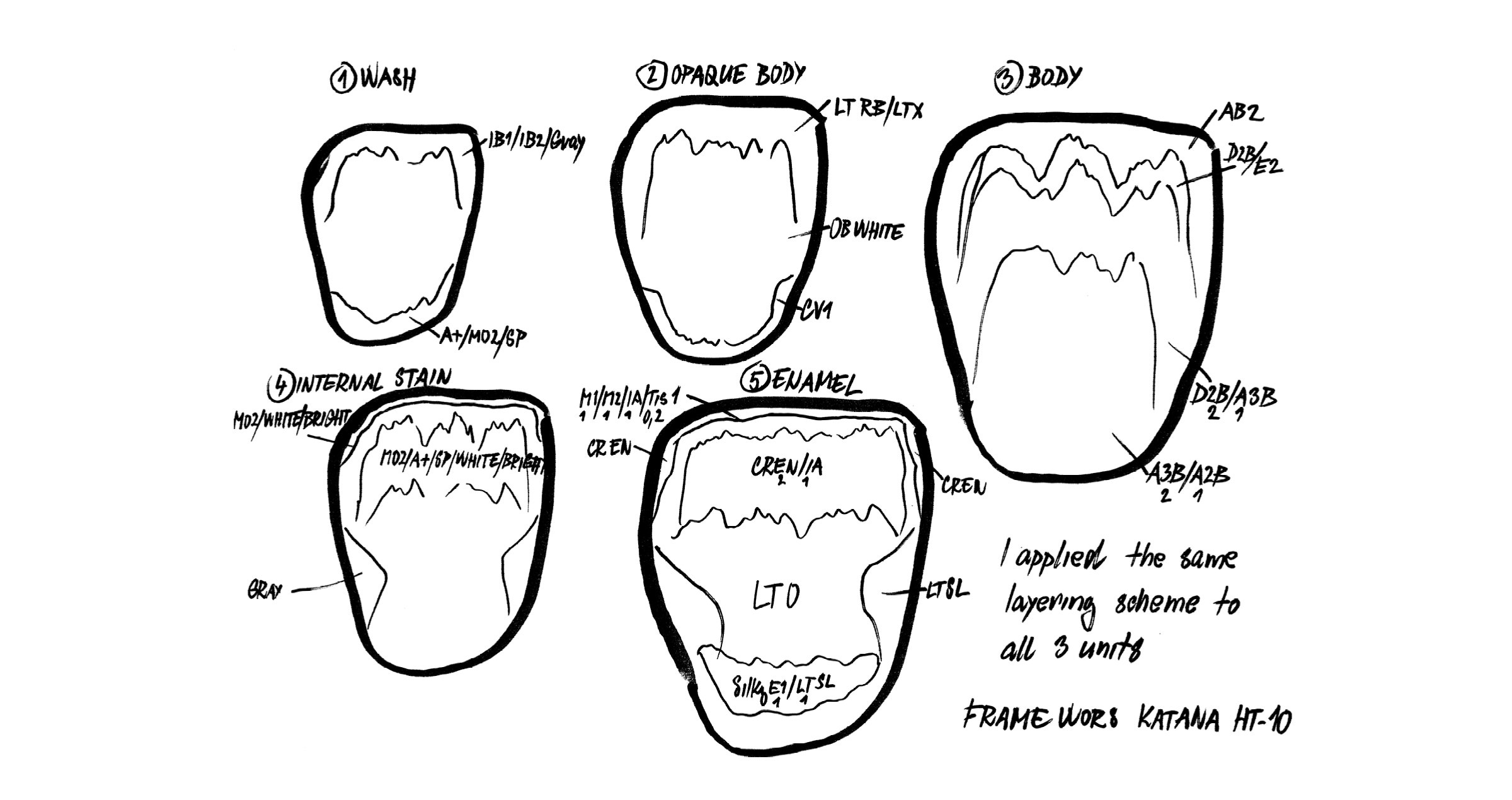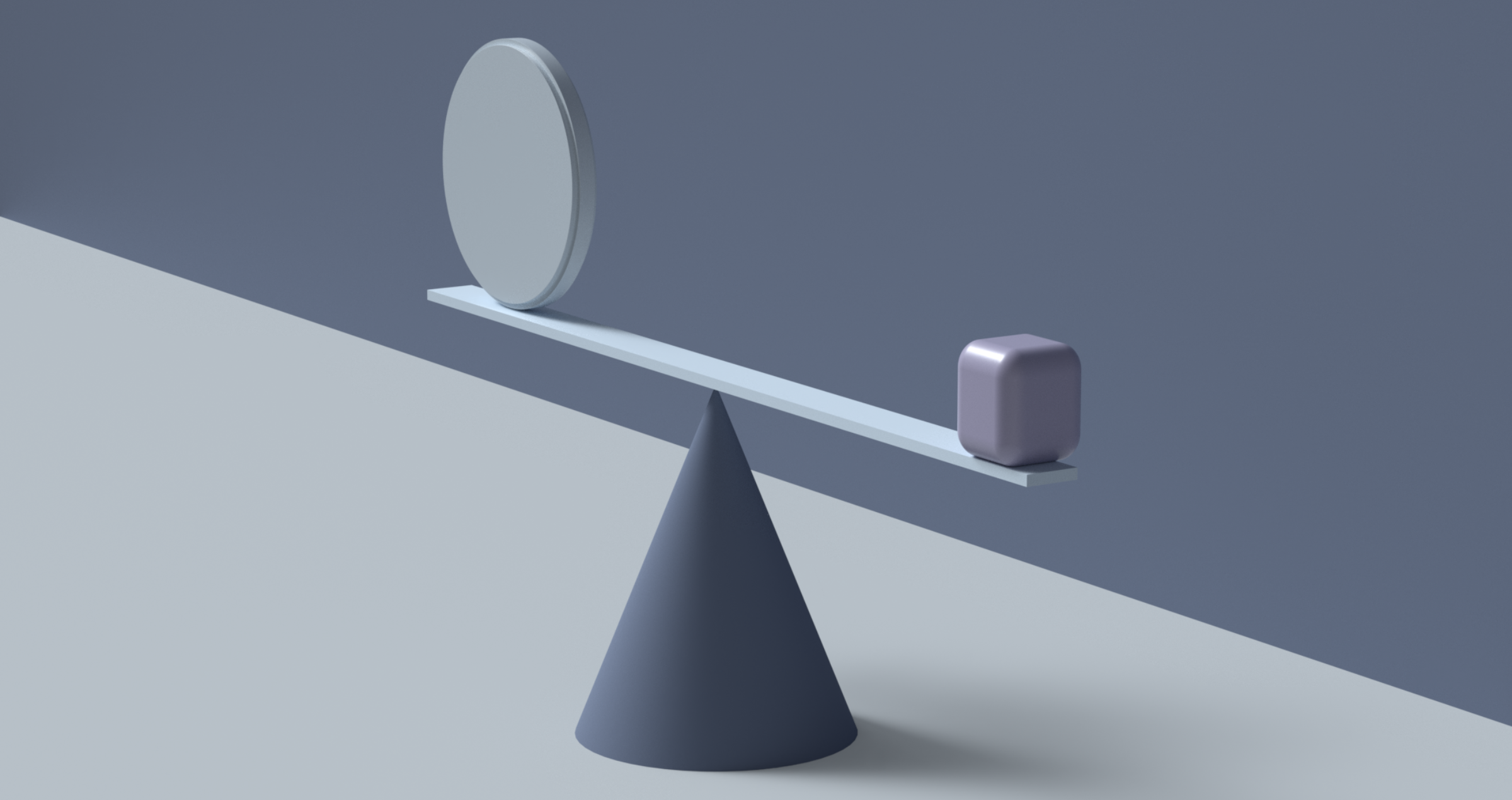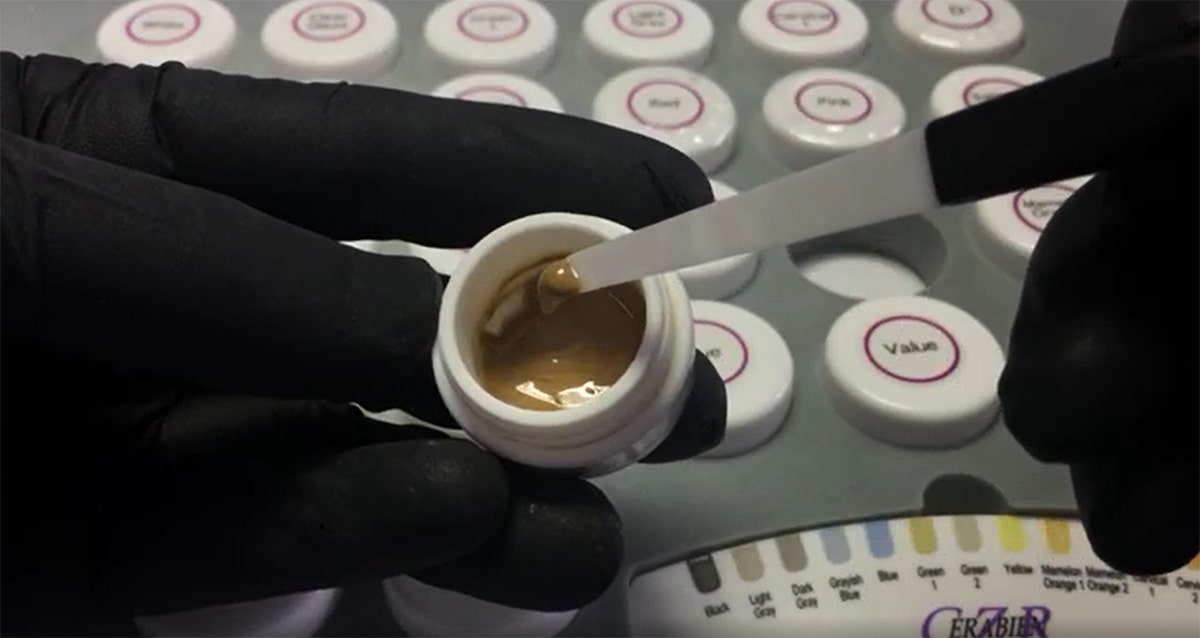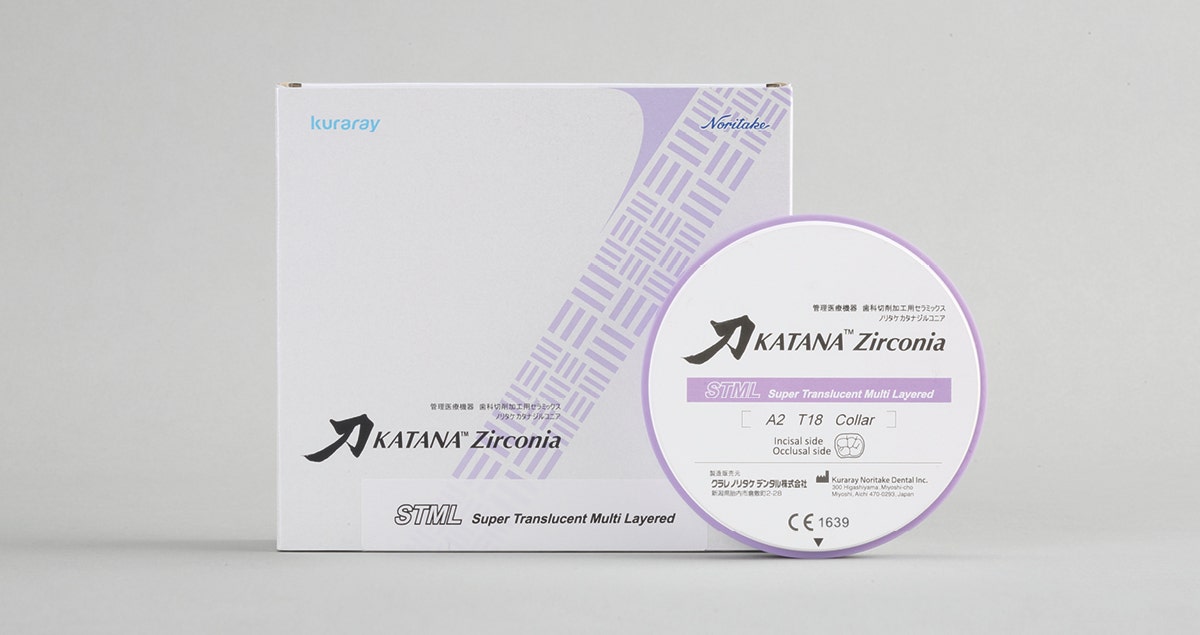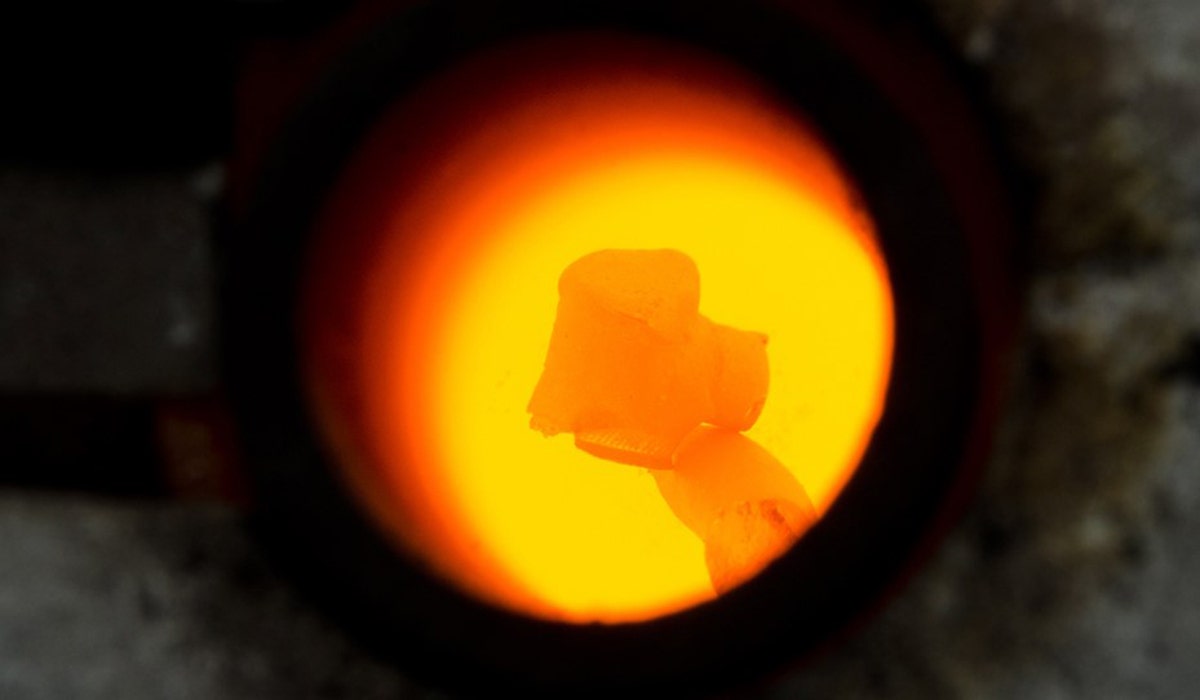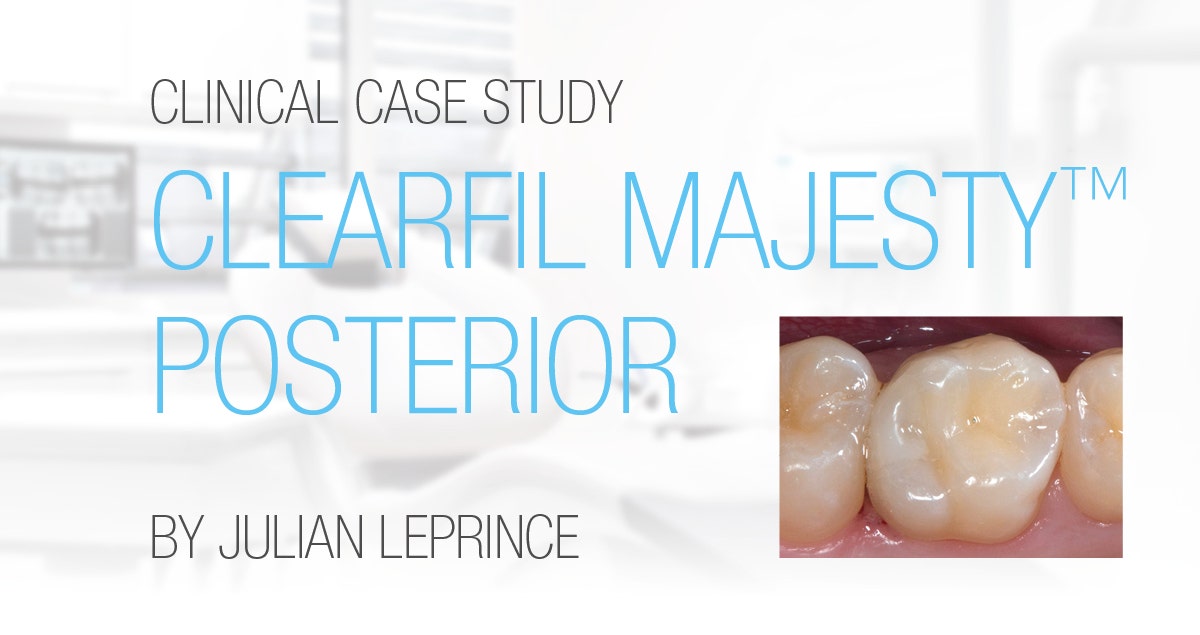The use of highly translucent, gradient pre-shaded zirconia brings more efficiency into the dental laboratory. Due to the advanced properties of the materials, e.g. from the KATANA™ Zirconia Multi-Layered Series, true-to-life restorations may be created without any or with only a small vestibular layer of veneering porcelain. This saves a lot of time usually required for manual work around steps in the veneering of zirconia frameworks. At the same time, this also allows for a reduced wall thickness, beneficial in the context of minimally invasive dentistry.
In order to leverage the high aesthetic potential and balanced mechanical properties of these types of zirconia, however, it is essential that the restorations are processed under ideal conditions. The most advanced materials with the highest translucency are particularly sensitive to contamination during and after wet milling, contamination of the furnace chamber, and temperature variations during sintering. Possible undesirable effects include a grayish appearance of the restorations and low chroma, green, yellow, blue or gray traces in the restorations, white spots on the surface and variations in colour and translucency.
If carried out on a regular basis, the following measures will effectively eliminate these effects. Hence, they will support users in ensuring consistently beautiful results.
Optimizing the milling process
Blue or gray traces visible in the final restoration are usually the result of contamination of the cooling water with extrinsic particles in the context of wet milling, (which is usually conducted in chairside procedures). In most cases, silica particles left over from the processing of glass or silicate ceramics with the same milling unit are the root of the problem. The effect is easily avoided by thorough cleaning of the milling chamber, the water tank and the filter insert of the milling machine every time a different material needs to be processed. Another solution is dry instead of wet milling, which offers additional benefits such as shorter processing time and better quality edges and surfaces.
Decontamination of the furnace chamber
In general, the chamber of the sintering furnace should be cleaned before sintering. Important measures include the removal of dust inside the sintering chamber and cleaning of the heating elements, both done with a soft brush. The use of compressed air is contraindicated.
Unwanted optical effects that occur on restorations due to contamination of the sintering chamber include white spots on the restoration surface, a blue-grayish appearance and low chroma, and green or yellow traces in the material. White spots on a restoration surface are usually indicators of contaminated alumina sintering beads or the use of the wrong instruments for surface modification and sprue removal. The effect is avoidable through a monthly or even more frequent replacement of the sintering beads (as soon as they show any signs of discoloration) as well as the exclusive use of fine-grid diamond instruments for adjustments prior to sintering.
Alumina sintering beads may be the cause of white spots on a restoration surface if not replaced on a regular basis.
The blue-grayish appearance and low chroma may be attributed to mineral residues from dipping liquids in the chamber. They are effectively removed with the aid of a decontamination program to be selected in the furnace menu, which is run after inserting several residual pieces of a highly translucent, white zirconia blank. As soon as the decontamination cycle is completed, the chromatic intensity of the residual blank parts indicates whether a second cycle is required. In order to prevent the occurrence of a grayish appearance in new restorations, it is recommended to perform a decontamination program at least once per month.
Pieces of a white zirconia blank left over after milling.
MoSi2 heating elements: Regeneration needed
If a restoration appears to be green or yellowish, it is most likely that the furnace is equipped with aging molybdenum disilicide (MoSi2) heating elements in need of regeneration or replacement. The inner part of the elements is made of molybdenum (Mo), which is usually covered by a protective layer of silica (SiO2). This layer is naturally built up during sintering at a temperature range between 1,000 and 1,600°C. As the thickness of the layer grows, its intrinsic residual compressive stress increases. This stress, as well as possible extrinsic influences, e.g. originating from acidic dipping liquids, may finally lead to cracks and a breakup of the protective layer. Once damaged, the molybdenum core is exposed. At a low temperature range of 400 to 600°C, the molybdenum reacts with oxygen in the sintering chamber, a process referred to as pest oxidation. The resulting molybdenum oxide (MoO3), together with ions or metal oxides from colouring agents, is responsible for the green-yellowish discoloration on the surface of the restorations.
Restorations displaying greenish surface pigmentation.
Molybdenum disilicide heating element with a protective silica layer bursting off, leading to pest oxidation and the contamination of elements in the sintering chamber.
Regeneration firing, which involves a rapid heating rate and a long firing phase at approx. 1,450°C, aims at regenerating the layer of silica. This measure, however, works only a limited number of times, as a repeated process of pest oxidation and regeneration leads to aging of the heating element itself. Hence, it will ultimately lead to the need for replacement. The whole issue of pest oxidation may be effectively avoided by the use of a furnace with silicon carbide heating elements, which are highly aging-resistant and do not cause any discoloration. A positive side effect is that these types of heating elements deliver more constant temperatures.
Temperature control
Variations in translucency or chroma and pigmentation of restoration surfaces are often due to deviations of the actual sintering temperatures from the recommended temperature curve. The only way to solve this issue is temperature calibration. This measure is not only a prerequisite for aesthetic results, but also has a decisive impact on the mechanical properties of the restorations: if the maximum temperatures are too high, for example, the flexural strength of the zirconia materials may be expected to decrease1.
Effect of temperature differences during sintering on restorations made of KATANA™ Zirconia UTML: The restorations were sintered at the same nominal temperatures in three different furnaces!
Temperature control is usually carried out with the aid of TempTABs or PTCRs (process temperature control rings). They are placed into the furnace on a sintering tray and typically processed by running a calibration cycle. After sintering, the tab or ring diameter is determined. As TempTABs and PCTRs exhibit controlled shrinkage, it is possible to calculate the actual sintering temperature based on the measured diameter. A conversion table supports the user in determining the deviation between the temperature actually reached and the temperature displayed on the furnace. Subsequently, the values displayed on the furnace are adjusted if necessary.
TempTAB on a sintering tray with restorations ready for sintering.
General recommendations
In order to set the stage for brilliant aesthetics and ideal properties of zirconia restorations, it is essential to ensure optimal processing conditions. Instead of troubleshooting carried out whenever discoloration appears after sintering, it is advisable to take the following actions on a regular basis as preventive measures:
- Cleaning of the milling machine’s water tank every time before starting to mill (wet milling only)
- Strict adherence to the sintering protocols recommended by the material manufacturer
- Removal of the dust from the sintering chamber and heating elements with a soft brush before each use
- Replacement of the alumina sintering beads whenever they show signs of discoloration (at least once per month)
- Exclusive use of fine-grid diamond instruments for sprue-removal and pre-sintering adjustments
- If possible: Use of furnace with silicon carbide heating elements
- Furnaces with molybdenum disilicide heating elements require constant visual control and regular regeneration cycles
- Running of a decontamination program with decontaminating powder or white zirconia residues (y-TZP) at least once per month
- Temperature control and calibration at least once per month
With these simple measures, it is possible to maximise the full potential of KATANA™ Zirconia Multi-Layered Series from Kuraray Noritake.
References
1 Stawarczyk, B., Özcan, M., Hallmann, L. et al. The effect of zirconia sintering temperature on flexural strength, grain size, and contrast ratio. Clin Oral Invest 17, 269–274 (2013).




